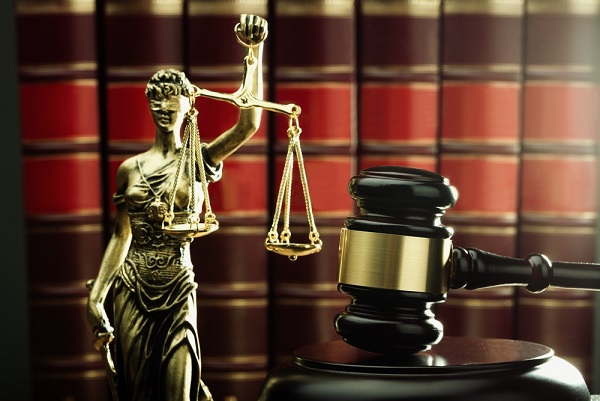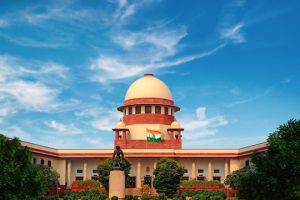This Article is written by Ajeet Kumar, who has completed B.A. LLB, from Asian Law College, Noida, Uttar Pradesh affiliated with Chaudhary Charan Singh University.
Table of Contents
Introduction
As we know India has one of the oldest legal systems in the world with its law and justice, dating back to centuries. Our law evolved from time to time and the process of justice has also evolved with it which in some ways is a misconception that the Indian legal system has gained a systematic shape and development.
During British rule the legal framework and an organized structure of judicial process was established which altogether evolved the mindset of society in respect to law.
During Indian history, several civilizations and rulers were ruling over India like Haryanka dynasty, Shishunaga Dynasty, Nanda dynasty, Maurya dynasty, Saka dynasty, shunga dynasty, kanva dynasty, Kushan kingdom, Satavahana Dynasty, Gupta kingdom, Chalukya Empire, Chola Kingdom, Chera Kingdom, Delhi sultanate, Slave Dynasty, Khilji dynasty, Tughlaq dynasty, sayyid dynasty, Lodi dynasty, Mughal empire and the finally British rule, whose legal system we still use in India.
After the independence of India on 15th August 1947, India formed a constituent assembly to frame its constitution, to adopt the principle of democracy. The constitution has borrowed many principles from the foreign constitution like the parliamentary form of government and rule of law and even majority of its structure is taken from the Government Act 1935 passed by British parliament.
JUSTICE S.S Dhavan says that: India has an oldest judiciary in the world, no other judicial system has a more ancient and exalted pedigree.
Laws In Indian Legal Systems
Law is basically a set of rules and regulations that are set to be created and enforced by a particular country or community through social or governmental institutions to regulate the action of its members.
In the constitution of India, every citizen has been given several rights and there will be infringement of those rights as well. Our legislature has introduced various laws to enforce and protect such rights. The Constitution of India has set up three branches of the State:
- The Executive
- The Judiciary, and
- The Legislature.
These are demarcated by their respective areas of jurisdiction. The judiciary is invested with the power to ensure that all organs of the Constitution act within their respective constitutional limits. It is also the sole interpreter of the constitution and the sole arbiter in all constitutional disputes.
Types Of Indian Legal System
The Constitution of India, 1950 is the foremost law that deals with the framework of the codes, procedures, fundamental rights and duties of citizens and powers, and duties of government. The laws in India are interconnected with each other forming a hybrid legal system. The classification of laws in the Indian judiciary system are as follows:
Criminal Law
The criminal law is enforced to pertaining the violation of rule of law or public wrongs, it includes murder, rape, robbery, assault is dealt under criminal law. Criminal law is governed under Indian Penal Code, 1860, and the Criminal Procedure Code 1973, The Indian Penal Code defines the crime, its nature, and punishment whereas Criminal Procedure Code 1973, defines the procedure and the punishment of the crime.
Civil Law
Civil law is a law that looks at actions that are not the crime, it is a matter of disputes between individuals or organizations that are dealt with under civil law. Civil law primarily focuses on disputes resolution rather than punishment. The act of process governed under the code of civil procedure 1908.
Examples of civil law are Torts, Breach of contract, Defamation, etc.
Common Laws
Common law is also known as case law or judicial precedent or judge-made law which is derived from the judicial decision of courts and similar tribunal. Common is law derived from judicial decisions instead of statutes. In common law a judgment can override or alter a common law, but it cannot override or change the statute.
Statutory Law
Statutory law consists of laws written and enacted by a legislative body. Statutory law may originate with national, state legislature, or local governing bodies. It is a law established by an act of the legislature that is signed by the executive or legislative body.
For state law, the acts are passed by the state legislature and signed by the state governor.
Legal system in India after Independence
After independence, Indian leaders had a huge task of formulating a constitution to govern a country with a huge population of more than 350 million which is more diverse. And the task fell on the constituent assembly, which consists of B.R Ambedkar as the chief of draft committee of the constitution and D.R Rajendra prasad is the president of constituent assembly.
Challenges Faced in the legal System
Judiciary is the one of the most important pillars of Indian democracy, which work as injustice done by the government and individual to secure the rights of aggrieved parties. But in recent times it is being seen that many issues and problems are aggravating the delivery of justice to the common people. Some of these challenges are as follows:
Highly pendency of cases
As per the data of integrated management system (ICMIS) over 4.5 crore cases were pending across all courts of India. Another report by the integrated management system (ICMIS) states that, as on 1 July, 2023, there are 69,766 cases pending in supreme court and 44.75 lakhs cases in High court.
At the district level the pendency of cases increases upto 3.14 crore.
Lack Of Infrastructure
A survey was conducted by the chief justice of India to know the status of the judicial infrastructure of the courts. According to a survey only 27% of the courtroom in the subordinate judiciary have computers on judge dais while there are only 10% of the courts have internet access.
Even in Noida and Delhi, labor courts don’t have proper infrastructure and other services. 22% of the trial courts do not have toilet facilities for women, while 16% don’t have such a facility for men.
Only 55%of courts have centralized filing centers and 31% of buildings have meditation halls.
Reason Behind Infrastructural Lag:
One of the primary reasons for the infrastructural lag in trial courts is the lack of funds and poor budget allocation. Funds are extended by the central government and state under the centrally sponsored for the development of judiciary infrastructure.
Even after more than seven decades of independence, the budgetary allocation, including state, is still below 1% of the GDP.
Vacancy
It is the one of the major issues to resolve at the earliest both subordinate courts and the High court level. The ministry of law and justice has informed the Rajya Sabha that district courts in India have a total vacancy of 5,850 judges.
As of August 19, 2023, against the sanctioned strength of 34 judges, 32 judges are working in the supreme court of India, leaving a vacancy of 2 judges. In the case of the High Court, against the sanctioned strength of 1108 judges, 775 judges are working in the High Court, and there is a vacancy of 333 judges to be filled.
Transparency And Unaccountably
Transparency can be seen as a fundamental characteristic of modern democracy. The Indian judiciary has been praised for playing an active role to promote good governance in India but the Indian judiciary itself is facing many challenges for true realization of good governance by the public at large.
There is a lack of transparency in the appointment of judges and administrative functioning of the judicial system in India. Transparency helps to ensure the citizens control of land participations in public matters.
Corruption
Corruption in our society is like a cancer, if it is not detected soon, it will surely spread its malignance among the polity of democracy. It shakes the foundation of democracy and the rule of law and also a threat to constitutional governance.
In the year 1949, Justice S.P Sinha of Allahabad High Court was removed under the Government Act 1935, on the basis of his judgment.
In the year 1979, Chief Justice Of India permitted the CBI to file a case of dipropionate income/wealth against chief justice of Madras High Court justice k Veera swami.
In September 2009, supreme court lawyer Prashant Bhushan in an interview to Shona Chaudhary of Tehelka Magazine said half of the last 19 chief justices were corrupt; the comment invited the apex court’s contempt.
As per the constitutional provision, there is no provision yet for registering an FIR against a judge who has taken bribes without taking the permission of the Chief Justice of India. Obviously, visiting the CJI, seeking his permission, and then registering an FIR is not what a poor man will prefer to do. This will prove to be more expensive and time consuming for him, besides the court and lawyer’s expenses.
Solutions To the Challenges Faced by Legal Systems
Delays in India’s judiciary system are not restricted to the courts; pendency is also an endemic problem in India’s specialized tribunals. There are various measures which can help to overhaul the problems faced by the Indian Judicial system in the present times.
Filling up the judicial vacancies and productivity
Many experts have suggested that the Indian government should tackle the challenges of increasing pendency in Indian courts by appointing more judges to the bench, India has very few judges per capita compared to other leading. Judicial productivity is calculated as the ratio of judges to cases disposed per year.
Budgetary Allocations for the Judiciary’s
As we know the budgetary allocation of India is still below 1% of the GDP. While most institutions demand more inputs, it is equally important to focus on the utilization of input.
Legal scholars have long held that India does not spend enough on the judiciary. Recently, the India Justice Report 2019 found that, out of the twenty-seven states and two union territories covered by the study, the growth rate of judicial expenditures was lower than the growth rate of total expenditures in twenty-one of them.
Example:
In Bihar, each year between fiscal year (FY) 2014 and FY 2018, the state judiciary’s actual expenditures fell short of the revised estimate by more than 20 percent. This gap suggests that the Indian judiciary is not able to budget properly or spend the (inadequate) funds allocated to it. This deficiency is likely due to lacunae in the judiciary’s internal administrative mechanisms.
Case Management
It means that the ‘progress of cases’ before the court must be managed in one sense, its directions from traditional adversarial case management. The court role was simply to respond to processes initiated by practitioners.
But, the objectives of new ‘case management’ include:
(a) Early resolution of disputes;
(b) Reduction of trial time;
(c) More effective use of judicial resources;
(d) The establishment of trial standards.
Decriminalization Of Petty Offenses
These cases are the minor offenses and they should be disposed of within the specific period of time as they account for a majority of pendency cases and special courts to be formed headed by retired judges can be established to deal with these cases.
These cases are traffic challan and cheque bounce cases.
Promoting Alternative Disputes Resolution (ADR)
In the modern era it is the most effective way to solve the legal disputes between the parties through mediation and negotiation among the individual and families and streamlining its process. It reduces the burden of the judiciary. It will lead to a greater sense of satisfaction among the parties who might get dissatisfied after a court judgment.
Conclusion
We know that law is the one of the important pillars of any country and if law and their set of rules and regulations do not work properly, then it may destroy the democracy of the country and the people of that country.
As we know before the independence laws were in the hand to Britishers, but after the independence the legal system came in our hands, but after getting that what we have done, we all knows, people are scared with the judicial system, they do not want to go to the judiciary because of the time consumption of judicial system and their procedure.
The legal system of India must be changed but now what is happening is the government is changing the law rather than changing the process of giving justice.
In my humble opinion, the government should focus on establishing more courts, fill up the vacant seats of judges, establish more speedy trial courts and make rules and regulation for judge and advocates.



